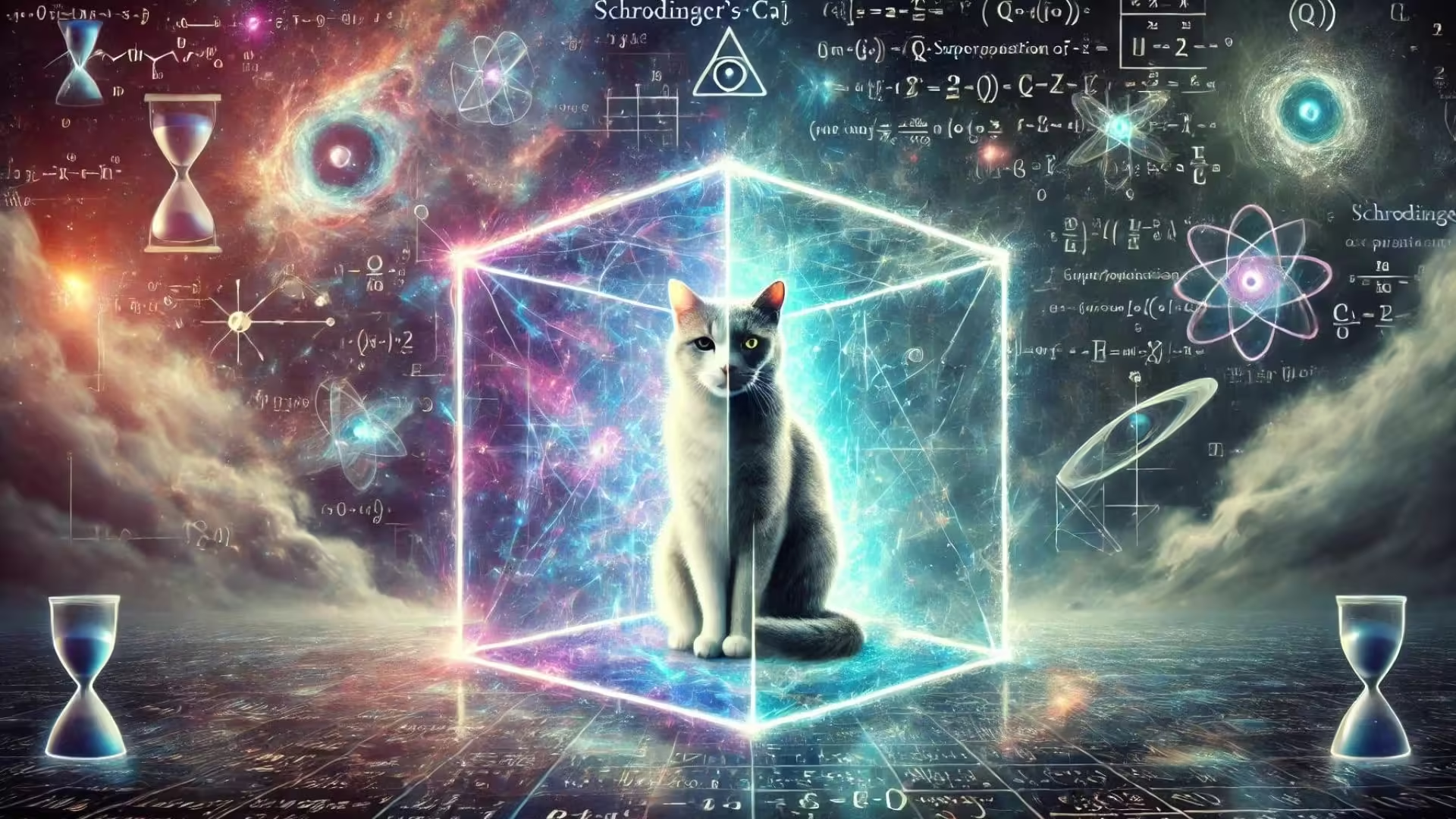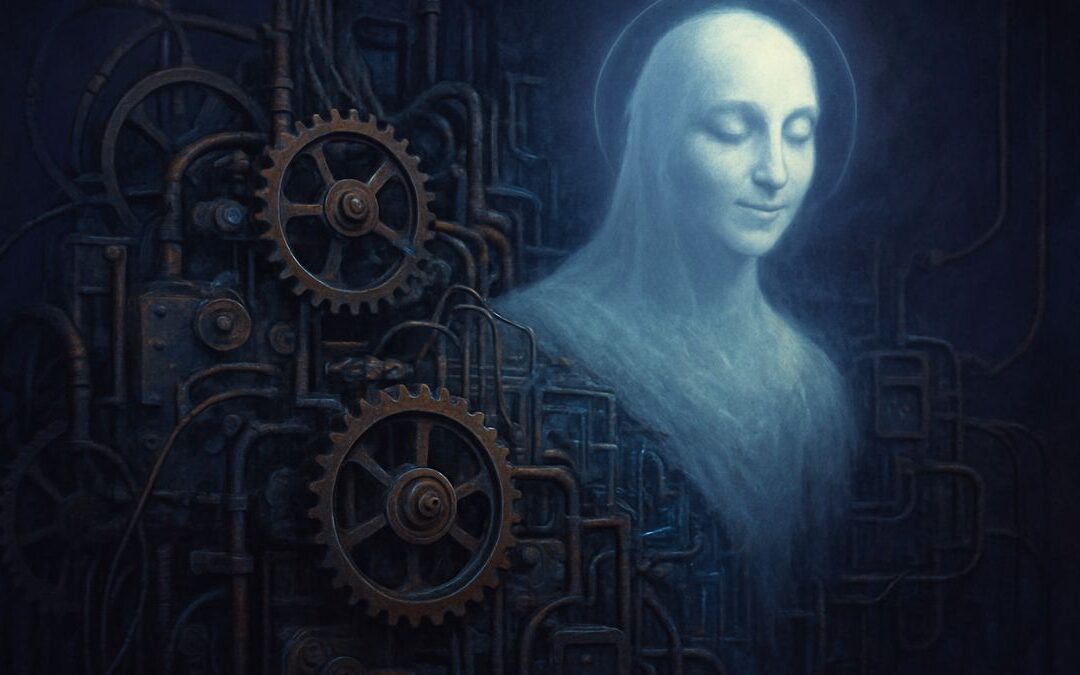Schrödinger’s Cat is more than just a curious tale involving a feline in a box—it’s a thought experiment that has profoundly impacted our understanding of quantum mechanics. If you’ve ever wondered why this bizarre scenario continues to captivate physicists and philosophers alike, this article will break it down for you in a way that’s both engaging and relevant to real life.
What Is Schrödinger’s Cat?
Imagine placing a cat in a sealed box. Inside the box, there’s a mechanism that contains a radioactive atom, a Geiger counter, a vial of poison, and a hammer. If the atom decays (an entirely random event), the Geiger counter triggers the hammer to smash the vial, releasing the poison, and the cat dies. If the atom doesn’t decay, the cat remains alive. But here’s the catch: until you open the box to observe the cat, quantum mechanics suggests that the cat is simultaneously alive and dead—a state known as superposition.
This scenario, proposed by physicist Erwin Schrödinger in 1935, was meant to illustrate the strange and counterintuitive nature of quantum mechanics. Schrödinger’s Cat challenges the classical idea that things exist in definite states—either this or that. Instead, it introduces the concept that at the quantum level, particles can exist in multiple states at once until they are observed.
Why Does It Matter?
At first glance, Schrödinger’s Cat might seem like a bizarre and impractical thought experiment. But its implications are far-reaching. It highlights the strange reality of quantum mechanics, where the act of observation plays a crucial role in determining the state of a system. This idea challenges our everyday experience, where things appear to exist independently of whether or not we observe them.
Relating this to real life, think about decisions or situations where you’re unsure of the outcome. Just like the cat in the box, the outcome remains in a state of uncertainty until you take action or make an observation. Schrödinger’s Cat reminds us that sometimes, the act of looking or deciding can fundamentally change the situation.
The Role of Superposition and Observation
The key concept behind Schrödinger’s Cat is superposition—the idea that particles can exist in multiple states at once. In the case of the cat, this means it’s both alive and dead until you open the box. But how can this be possible?
In quantum mechanics, particles don’t behave like solid objects that we can easily understand. Instead, they exist in a cloud of probabilities, with the potential to be in different states simultaneously. It’s only when we observe them that these probabilities collapse into a single outcome—this is known as wave function collapse.
In real life, this concept can be related to the idea of potential. For example, before you make a significant decision—whether it’s choosing a career path, moving to a new city, or starting a new project—you exist in a state of potential. The moment you take action, that potential collapses into reality, much like how observation collapses the wave function in quantum mechanics.
What Are the Philosophical Implications?
Schrödinger’s Cat isn’t just a scientific thought experiment; it’s also a philosophical one. It raises questions about the nature of reality and how much our perceptions shape the world around us. If observation can change the outcome of a quantum event, what does that say about our ability to influence reality on a larger scale?
This idea has sparked debates among physicists and philosophers for decades. Some argue that it challenges the very foundation of what we consider to be real, while others see it as evidence of the interconnectedness between the observer and the observed.
In everyday life, this concept encourages you to consider how your perceptions, decisions, and actions might influence the world around you. Just as the cat’s fate isn’t sealed until the box is opened, your choices can shape the reality you experience.
How Has Schrödinger’s Cat Influenced Modern Science?
The impact of Schrödinger’s Cat extends beyond theoretical discussions. It has influenced fields like quantum computing, where the concept of superposition is used to create qubits—quantum bits that can exist in multiple states simultaneously, offering exponentially more computing power than classical bits.
Moreover, the thought experiment has become a cultural touchstone, referenced in everything from popular science fiction to everyday discussions about uncertainty and decision-making. Its legacy reminds us that even the strangest ideas can have profound implications for how we understand the world.
Take Action
Schrödinger’s Cat teaches us that uncertainty is a natural part of life, but it also reminds us that our actions and observations can shape outcomes. The next time you face a situation filled with uncertainty, remember that you have the power to influence the result—just as observing the cat determines its fate. Embrace the unknown, take action, and be mindful of how your decisions can impact the world around you.
By exploring the complexities of Schrödinger’s Cat, this article encourages you to think about how quantum concepts can apply to real-life situations. How will you use the lessons from this thought experiment to approach uncertainty and decision-making in your own life?
Expand Your Vocabulary
- Thought Experiment
- Meaning: A hypothetical scenario used to illustrate or explore complex ideas, often in science or philosophy.
- In Context: Schrödinger’s Cat is described as a thought experiment designed to challenge our understanding of quantum mechanics. In everyday life, you might use this term to describe mental exercises that help you think through different possibilities, such as, “Let’s do a thought experiment: What if you had all the resources you needed to start your dream project?”
- Quantum Mechanics
- Meaning: A branch of physics that deals with the behavior of particles at the atomic and subatomic levels.
- In Context: The article explains how Schrödinger’s Cat highlights the strange nature of quantum mechanics. In everyday conversation, you might use this term when discussing advanced physics or concepts that seem counterintuitive, like, “Quantum mechanics is fascinating, but it’s hard to wrap your head around how particles can exist in multiple states at once.”
- Superposition
- Meaning: In quantum mechanics, the ability of a particle to exist in multiple states simultaneously.
- In Context: The concept of superposition is central to Schrödinger’s Cat, where the cat is both alive and dead at the same time until observed. In everyday life, you might use this term metaphorically to describe situations with multiple possibilities, such as, “I feel like I’m in a state of superposition—both excited and nervous about the upcoming event.”
- Observation
- Meaning: The act of watching or noticing something, which in quantum mechanics can influence the outcome of an event.
- In Context: The article discusses how observation in quantum mechanics can collapse possibilities into a single reality. In everyday use, observation might refer to noticing details, like, “Careful observation of the situation helped me make the right decision.”
- Wave Function
- Meaning: A mathematical description of the quantum state of a system, which includes all possible states that the system can be in.
- In Context: The wave function represents the probabilities of different outcomes before observation. You might encounter this term in physics or when discussing probabilities, such as, “The wave function is like a blueprint of all the possible outcomes before you make a choice.”
- Collapse
- Meaning: In quantum mechanics, the reduction of multiple possible states into a single, definite state upon observation.
- In Context: The article describes how observing Schrödinger’s Cat causes the wave function to collapse, determining the cat’s fate. In everyday language, collapse can refer to anything that suddenly changes or breaks down, like, “His plan collapsed after the unexpected news.”
- Potential
- Meaning: The capacity to develop or come into existence; in quantum mechanics, it refers to all possible states a system can exist in before observation.
- In Context: The article relates the concept of potential in quantum mechanics to real-life decision-making. You might use this term to describe someone’s abilities or future possibilities, like, “She has so much potential to excel in her career.”
- Reality
- Meaning: The state of things as they actually exist, rather than as they might appear or be imagined.
- In Context: Schrödinger’s Cat challenges the classical notion of reality, showing that observation can influence what becomes real. In everyday life, you might talk about reality when discussing what is truly happening versus what is imagined, such as, “The reality of the situation was much different than I expected.”
- Uncertainty
- Meaning: A state of being unsure or having doubts about something; in quantum mechanics, it refers to the inherent unpredictability of particles.
- In Context: The article uses Schrödinger’s Cat to illustrate the concept of uncertainty, both in quantum mechanics and in life. In everyday conversation, you might use this word to describe unclear situations, like, “The uncertainty of the job market makes planning for the future challenging.”
- Philosophical
- Meaning: Relating to the study of fundamental questions about existence, knowledge, values, and reason.
- In Context: Schrödinger’s Cat has philosophical implications, raising questions about reality and observation. You might use this term when discussing deep or abstract ideas, like, “We had a philosophical discussion about the meaning of life.”
Let’s Talk
- How does the concept of superposition—being in multiple states at once—relate to situations in your life where you face multiple possibilities? How can you use this understanding to approach decision-making with more confidence?
- This question encourages you to think about how the idea of superposition can help you navigate uncertainty and explore your options before making a decision.
- Schrödinger’s Cat highlights the importance of observation in determining outcomes. How does this concept influence the way you view your role in shaping your own reality?
- This question prompts you to consider how your actions and observations can impact your life and the outcomes of the situations you encounter.
- The thought experiment of Schrödinger’s Cat challenges our traditional understanding of reality. In what ways do you think your perceptions might influence how you experience the world around you?
- This question invites you to reflect on the power of perception and how it can shape your experiences and interactions with the world.
- Uncertainty is a key theme in quantum mechanics and in life. How do you typically handle uncertainty, and what strategies can you adopt to become more comfortable with it?
- This question encourages you to explore your relationship with uncertainty and consider ways to embrace it rather than fear it.
- Schrödinger’s Cat has philosophical implications beyond physics. What philosophical questions or ideas does this thought experiment raise for you, and how do they relate to your personal beliefs?
- This question opens the door to a deeper exploration of the philosophical aspects of the thought experiment, encouraging you to connect it to your own worldview.
By engaging with these questions, you can deepen your understanding of Schrödinger’s Cat and its relevance to both quantum mechanics and everyday life. Discussing these ideas with others or reflecting on them personally can lead to new insights and a greater appreciation for the mysteries of the universe.











0 Comments